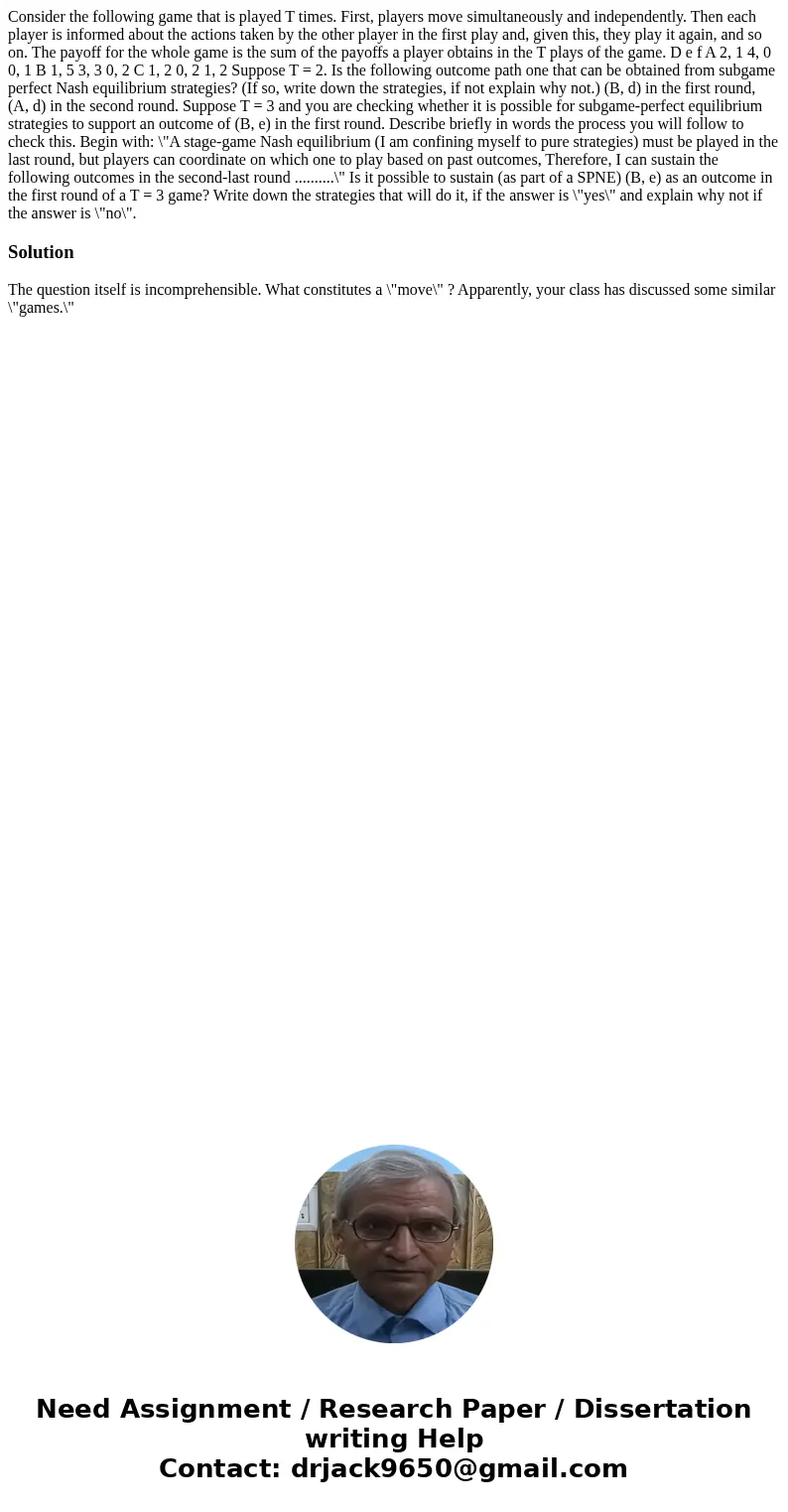Consider the following game that is played T times First pla
Consider the following game that is played T times. First, players move simultaneously and independently. Then each player is informed about the actions taken by the other player in the first play and, given this, they play it again, and so on. The payoff for the whole game is the sum of the payoffs a player obtains in the T plays of the game. D e f A 2, 1 4, 0 0, 1 B 1, 5 3, 3 0, 2 C 1, 2 0, 2 1, 2 Suppose T = 2. Is the following outcome path one that can be obtained from subgame perfect Nash equilibrium strategies? (If so, write down the strategies, if not explain why not.) (B, d) in the first round, (A, d) in the second round. Suppose T = 3 and you are checking whether it is possible for subgame-perfect equilibrium strategies to support an outcome of (B, e) in the first round. Describe briefly in words the process you will follow to check this. Begin with: \"A stage-game Nash equilibrium (I am confining myself to pure strategies) must be played in the last round, but players can coordinate on which one to play based on past outcomes, Therefore, I can sustain the following outcomes in the second-last round ..........\" Is it possible to sustain (as part of a SPNE) (B, e) as an outcome in the first round of a T = 3 game? Write down the strategies that will do it, if the answer is \"yes\" and explain why not if the answer is \"no\".
Solution
The question itself is incomprehensible. What constitutes a \"move\" ? Apparently, your class has discussed some similar \"games.\"

 Homework Sourse
Homework Sourse